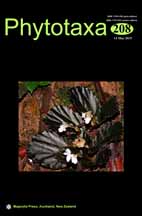Abstract
A revision of the freshwater diatom genus Luticola from the McMurdo Sound Region, including the McMurdo Dry Valleys and Cape Royds, Antarctica, was made to contribute to a consistent flora for the entire Antarctic Region. Detailed light and scanning electron microscopic observations, review of pertinent literature, and examination of historical and type material lead to the identification of 12 Luticola species. Four new species and one new combination are proposed, including L. bradyi sp. nov., L. spainiae, sp. nov., L. macknightiae, sp. nov., L. transantarctica, sp. nov., and L. elegans, comb. nov. stat. nov. Several of these taxa were previously identified as part of the L. muticopsis (Van Heurck) D.G.Mann complex; Navicula muticopsis f. evoluta W. & G.S. West, L. muticopsis f. reducta (W. & G.S. West) Spaulding, and N. muticopsis f. capitata Carlson, or mistaken for the similar L. mutica (Kützing) D.G.Mann and L. cohnii (Hilse) D.G.Mann. Morphological features of all new species were compared to the closest morphologically similar taxa, and their ecology and biogeography are discussed. All Luticola species considered here show restricted Antarctic distributions, and 8 of the 12 reported species are known only from the Antarctic continent.

